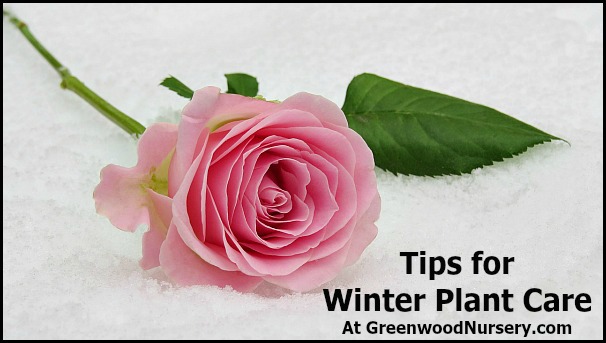Free gardening gloves when you spend $75.00 or more!

As the autumn takes its slow walk towards winter, this is an ideal time to care for your plants and protect them from winter’s eventuality. Act now before it’s too late! Whether it’s a killing frost, an unexpected cold snap, or just the decreasing daylight as we move towards winter solstice, winter is closer than it appears.
Here a few tips for winter plant care to have them ready to thrive when spring eventually arrives again.
Bring Plants Inside
If you have a patio garden with potted plants and want to preserve them, you should find a place inside for them. Also, if you have tender perennials like rosemary growing in a garden, you can dig it up, place it in a pot, and replant it in the spring.
Once inside you may consider taking time to re-pot some of those plants and give them fresh potting soil. If necessary, prune them. Pruning will not only help shape your plants, but it will also concentrate the energy into the parts of the plant that will help them prosper come spring.
One note of caution, when your plants move inside they will not need as much water as when they were outside. If the soil feels moist, don’t add water until it feels dry.
After your plants’ climate-controlled winter, give them time to get re-acquainted with the outdoors. As spring nears, put them outside for a few hours and allow them to harden to the conditions.
Some bulbs from the flower garden should be removed and stored. They are considered tender bulbs that include dahlia, gladiolus, tuberous begonia, canna, and calla lily.
Cover Your Plants and Planters
If some of your planters are too large to bring inside, protect them and the plants they house. A rule of thumb is plants that are at least two zones hardier than your own growing zone are generable able to survive the winter outdoors in containers.
By surrounding your planters with bags filled with leafs. Be sure those bags are secured. Should the wind come whipping after a few dry days, they might turn into tumbleweeds.
The bags will provide insulation and should keep your plants and planters protected.
Roses can also benefit by being encased in leafs or mulch.
While we are talking about protection, you should consider offering your shrubbery the same consideration. A burlap cover will help your shrubs maintain their shape under the weight of snow and protect them from icy winds.
Cut or Not To Cut Your Plants
Lately, the general trend is not to clear your garden of all the debris. Not only will the roots of those stalks keep the topsoil from blowing away, the deteriorated stems or stalks, whether they are flowers or vegetables, will give birds and small creatures places for food and shelter. Seed heads are an excellent food source for birds when they need it most, and the stems offer place to perch.
However, some plants should be cut back. Their foliage turns mushy after a hard frost and carries the chance to harbor insects or disease. If Hardy Begonia is not cut back, it is subject to crown rot. Peonies should be cut back as well since their foliage can be subject to mildew. You might wish to do some research which plants in your garden should be cut.
Mulch Your Plants
Mulch is the blanket to help keep the soil temperature as even as possible. It will protect the topsoil and provide a dose of nutrition to get your garden off to strong start in the spring. This is especially important where there are bulbs. During the winter frost can crack the soil and case your bulbs to rise to the surface. Mulch will help prevent this from happening.
Doing these tasks will extend the garden season and begin the process of preparing your garden for the next year.
- cheryl's blog
- Log in or register to post comments







